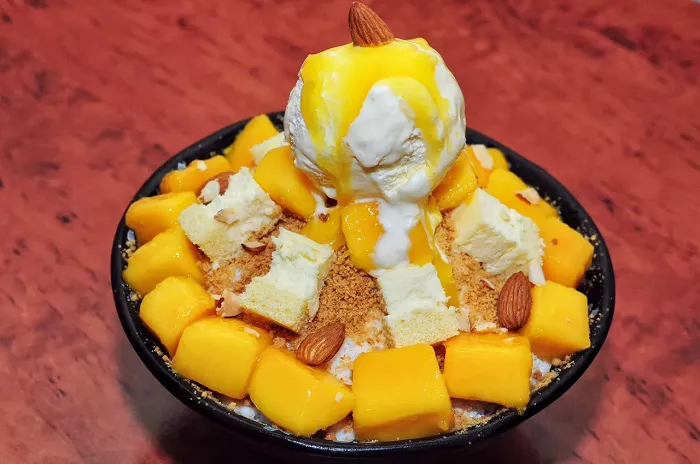As summer temperatures rise, so does the competition in Korea’s shaved ice (bingsu) market — and 2025 is shaping up to be a season of extremes. With price points stretching from under ₩5,000 to over ₩150,000, consumers now find themselves at the center of a “bingsu war,” where both luxury and affordability are driving innovation and demand.
Luxury Bingsu for the ‘Small Luxury’ Generation
High-end hotels are going all-in on premium bingsu, targeting young consumers who embrace “small luxury” — spending selectively on indulgent, Instagram-worthy experiences.
At the top of the pyramid, Four Seasons Hotel Seoul unveiled its “Jeju Apple Mango Bingsoo” for ₩149,000, a delicacy topped with over two whole Jeju-grown mangoes and up 18% from last year’s price. Similarly, Signiel Seoul, The Shilla Hotel, and Fairmont Ambassador Seoul have all launched mango-forward bingsu in the ₩110,000–₩130,000 range, citing rising ingredient costs and growing demand.
But the most extravagant entry comes from Grand Intercontinental Seoul Parnas, whose ₩150,000 Belle Époque Champagne Bingsu mixes frozen champagne granita, milk ice, cheese, and avocado in a bold collaboration with French label Perrier-Jouët.
Affordable Indulgence: One-Person and Convenience Store Bingsu
At the other end of the spectrum, franchise cafes and convenience stores are dominating the value-driven segment with one-person cup bingsu that deliver on both flavor and price.
Mega MGC Coffee has sold over 1.2 million cup bingsu since late April, including its popular Red Bean Ice Gelato Parfait and Mang Bing Parfait (mango-coconut-cream). Each is under ₩5,000, designed for portability and solo indulgence.
EDIYA Coffee followed suit with a diverse lineup priced at ₩6,300, including creative flavors like Honey Jamon Granola, Chosugar Corn, and Injeolmi Red Bean.
Meanwhile, 7-Eleven jumped into the fray early with its Mango Yogurt Shaved Ice, aiming to recreate the hotel bingsu experience at a fraction of the cost and a month ahead of seasonal trends.
The Takeaway: Bingsu for Every Budget
Industry experts note that bingsu is no longer just a seasonal dessert — it’s a status symbol, a comfort food, and a daily luxury depending on where and how it’s consumed.
“The price range now runs from less than ₩10,000 to over ₩150,000,” said one industry insider. “It’s not just a dessert anymore — it’s a lifestyle choice.”
Whether it’s a champagne-topped masterpiece served on fine china or a plastic cup of red bean and mochi from the corner store, Korea’s summer bingsu boom ensures there’s a bowl for everyone.
Related topics
- Dead Lizard Found in Ice Cream Prompts Factory Probe
- Ice Cream Tasting Fee Sparks Debate in Forte dei Marmi
- Amy’s Ice Creams Celebrates 40 Sweet Years in Austin


